This week marks the 20th anniversary of Face/Off, one of the greatest action movies of the 1990s and the greatest movie of all time with a slash in the title (come at me, Frost/Nixon fans). John Travolta plays Sean Archer, a supercop who finally puts his terrorist arch-nemesis Castor Troy (Nicolas Cage in full crazy mode) into a coma in the first fifteen minutes. But Troy has planted a bomb somewhere in Los Angeles, and his gang members aren’t talking. So naturally, Archer switches faces with the unconscious Troy so he can go undercover, and of course Troy immediately comes out of his coma and gleefully starts impersonating Archer (including sleeping with his wife!!), leaving the real Archer no choice but to team up with Troy’s fellow terrorists to survive… it gets pretty wacky.
I’m pleased to report that 20 years later, Face/Off is still a delight, thanks to the irresistible cat-and-mouse-meets-Freaky–Friday premise, stylish action scenes (including a brutal shootout staged to a dreamy cover of “Somewhere Over the Rainbow”), and scenery-chewing performances from the two greatest hams of the 90s. Say it with me: “I’d like to take his face… off.”
But the lion’s share of the credit goes to director John Woo, who had a brilliant career in Hong Kong before coming to Hollywood in 1993. As a movie nerd teenager, I remember getting my hands on a bootleg copy of Hard Boiled and feeling like I was seeing something from a different league. (One action scene unfolds as a single 3 minute tracking shot that covers two floors and dozens of bodies.) But Woo had trouble navigating the language and cultural gaps, and his first two American efforts (Hard Target and Broken Arrow) didn’t feel like true John Woo movies. That changed with Face/Off; the final showdown in a church filled with slow motion doves is the John Wooiest thing that has ever John Wooed (fun fact: Woo wanted to be a minister as a child). The movie’s warm reception seemed like validation that infusing Hollywood action with eastern flair was the future.
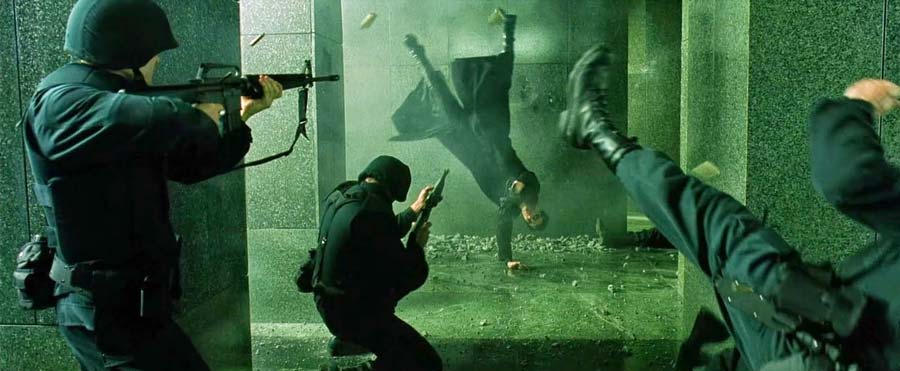
As it turns out, Hollywood was going to be transformed by eastern cinema, but the result wasn’t going to look like Face/Off. It was going to look like The Matrix. That movie would come out less than two years later, and it owed a huge debt to anime and martial arts films. And The Matrix, in turn, pretty much defined what a cool action movie should be in the early 2000s: just look at the bullet time of Swordfish, the wire fu of Charlie’s Angels, or the stylized visuals of Underworld. So within only a few years of its release, Face/Off already felt dated in a few major ways.
Practical Effects
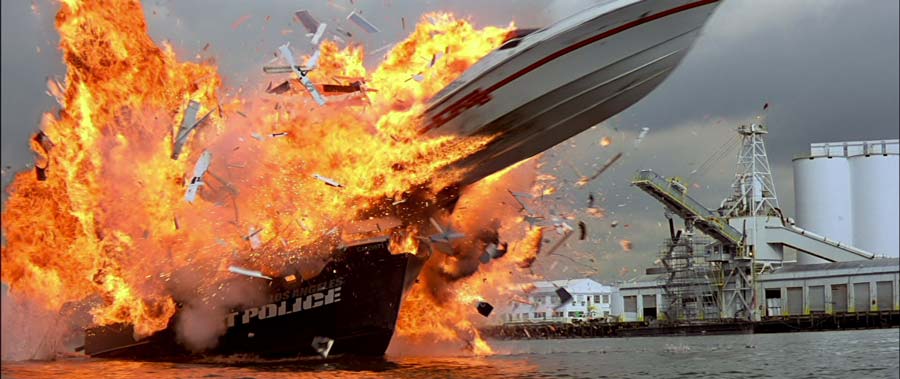
I remember an Entertainment Weekly from that summer where they discussed how Woo wanted to capture images of real bullets actually leaving the barrel of a gun. They brought in a special high speed camera to pull this off. How quaint does this seem when you realize that at the same time, they were developing bullet time across town?
IMDB’s trivia page for Face/Off tells me, “Most of the challenging action scenes, including the fight on the deck of the boat and the airplane going down the runway, were originally planned as green screen shots. But they filmed them practically to support the ‘realism of story.’” Nowadays that philosophy is back in vogue; Star Wars Episode VII used practical effects and puppets whenever possible. But the late 90s was the beginning of a period where computer effects were rampaging out of control (see: Star Wars Episode I (actually, do not see this)). Only a couple months after Face/Off, Spawn hit theaters, a movie that is simply drenched in questionable CGI. Both for cost reasons and for aesthetic reasons (people really loved bullet time), practical effects were about to get pushed to the back burner for a decade.
Out of Shape Action Stars
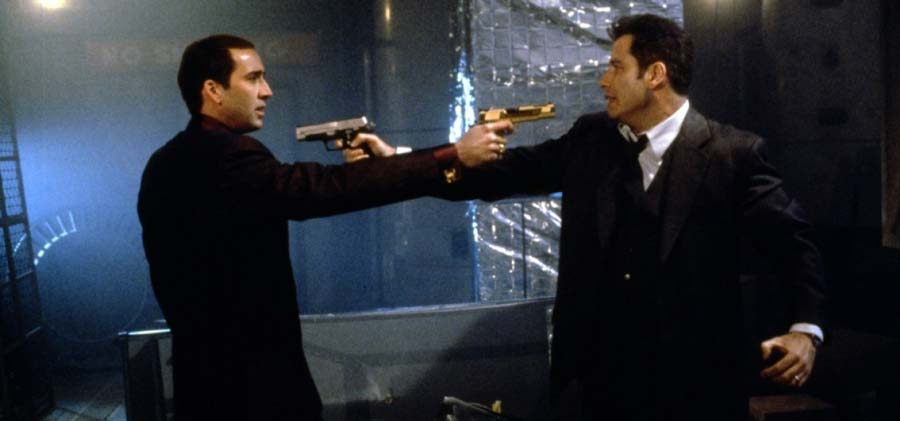
Travolta was 43, Cage was 33, and neither had much of a beach body. Now certainly, most of the action stars of the 80s and 90s were actually physically fit (Schwarzenegger and Stallone were world-class beasts), but 1997 was still a time when you could be an action star without being a Greek god. Bruce Willis’s everyman looks were half his appeal.
But men were about to be objectified in a big way, and I blame Brad Pitt’s inguinal creases. Fight Club in 1999 changed our expectations for what a tough guy looks like (which is super ironic because that’s the exact opposite of what the movie tells us). One year later brought us Hugh Jackman as Wolverine, who started out buff and became disturbingly buff over the next 10 years. Then came Jason Statham, the Rock, and the Spartans of 300. You no longer could be a man of action without looking the part (unless you’re Liam Neeson, but he’s a sub-genre all his own).
And it wasn’t just about appearance; we now expect our action stars to have a certain level of expertise in the deadly arts. The Matrix cast underwent months of intensive kung fu training before shooting, which allowed them to perform their own fight scenes, which gave the directors freedom to shoot the action in ways that weren’t design to hide the stunt doubles. Nowadays it’s practically expected that with every new action movie, we’ll hear stories about the extreme measures the actors took to become accomplished martial artists (the ongoing Atomic Blonde rollout is the latest example). Back in 1997, I’m pretty sure Travolta and Cage just let the doubles earn their paychecks while they ate sushi at craft services. You can totally see how the camera is working to hide the fact that it’s not really them flying through the air.
Good Guys who Play By The Rules
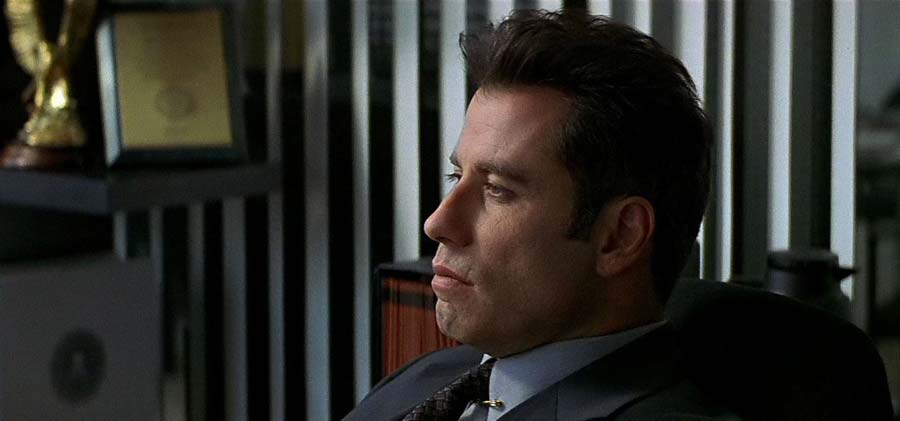
The person Archer is supposed to get information from is Troy’s wimpy younger brother, who would clearly blurt out everything if you so much as gave him a paper cut. The fact that nobody discusses torture feels crazy in our post-9/11 world. By 2002, the obvious solution to this literal ticking bomb scenario would start with waterboarding and escalate from there. And after shows like 24 normalized the idea of a hero who skirts the rules to save lives, it was hard to go back to a hero who didn’t. In 2013’s Furious 6, the Rock is faced with a vaguely Face/Off-like situation: he’s on the trail of a WMD, and he needs information from a captured gang member to find it. Almost without hesitation, he absolutely demolishes the interrogation room using the guy’s face as a wrecking ball. It’s played off as a funny moment of American toughness, but in 1997 a hero wouldn’t have acted that way. Torture was strictly for the bad guys.
Just to be clear, I’m not making a grumpy old man argument that the action movies of yesteryear are superior to the action movies of today. I love effects-driven eye candy like the The Fate of the Furious, as well as balletic masterpieces like John Wick. Those films couldn’t have existed back in the 90s. And I’m not knocking The Matrix either, which remains one of the all-time greats. But Face/Off is special. It’s the last masterpiece from the Golden Age of Hollywood R-rated action, before computers and personal trainers changed everything for good.
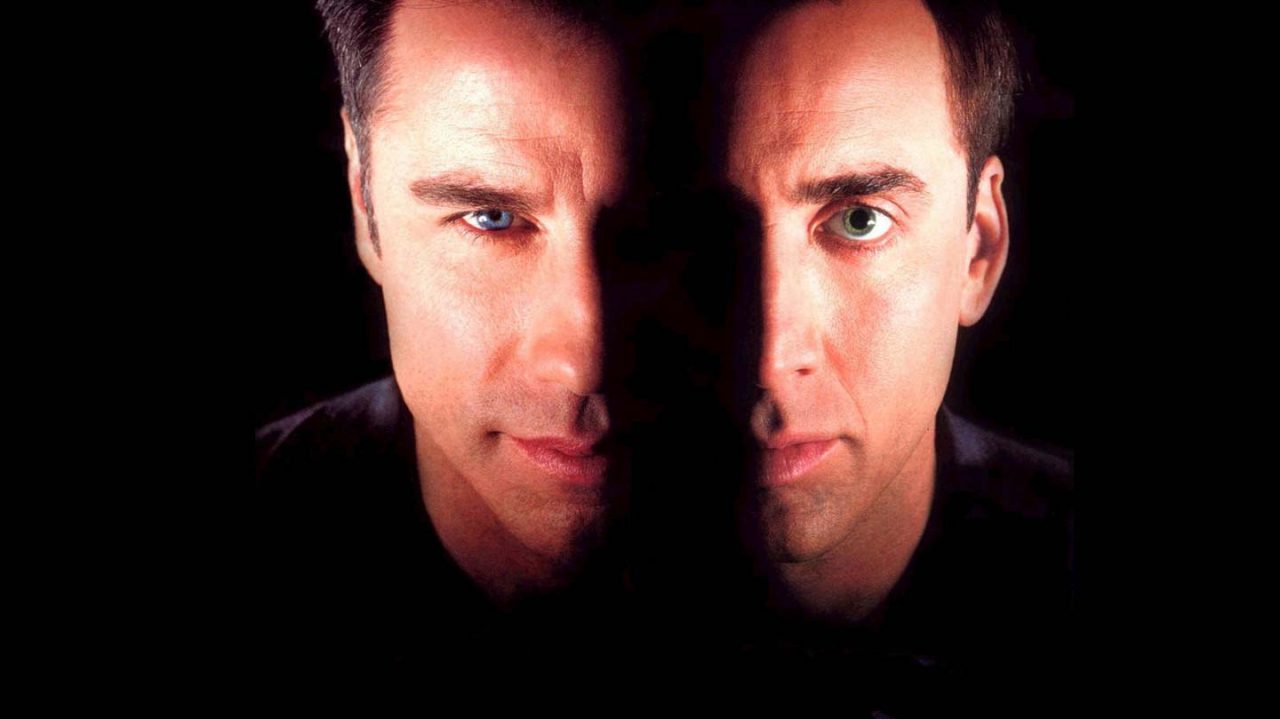
Add a Comment